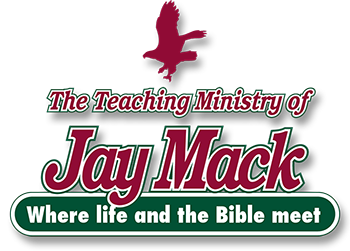The Ark at Abinadab’s House
First Samuel 7:1
The Ark at Abinadab’s house DIG: Why wasn’t the Ark taken to Shiloh? Who were the Gibeonites? How was the Ark the smell of death to Beth-Shemesh, and the fragrance of life and joy to the faithful household of Abinadab? How did he and his son observe the mitzvot of the Ark? What didn’t they do with the Ark?
REFLECT: How do you treat the things of God in your life? What have you done with the things that God has entrusted to you? Have you grown weary of it, has it become a burden to you, or have you been faithful? How does Yeshua answer the question: How can we stand in the presence of such a holy God?
The Ark remained in the custody of Abinadab and his family for about 100 years.

The people of Kiriath-Jerarim provide a third example (to see link click Bk – The Ark at Beth-Shemesh for the other two) of how can we stand in the presence of such a holy God, namely, by faith. So the men of Kiriath-Jearim came and brought back the Ark of God. No doubt the Ark was taken there rather than to Shiloh, because the latter was destroyed by the Philistines (see Ae – The Tabernacle at Shiloh). They took it to the home of Abinadab on the hill and appointed his son Eleazar to guard the ark of God (7:1). It was noteworthy that Kiriath-Jearim was a Gibeonite city (Josh 9:17). The Gibeonites were Gentiles who tricked Joshua into permitting them to live who were assigned as woodcutters and water-bearers for the Tabernacle (Joshua 9:21-22). Thus, God shows that His true people are those who respond to Him in faith. Though they had not been born into the covenant, those Gibeonites trusted God’s Word; acting according to Scripture, they were anxious to have the Ark in their midst.162
Trusting in the grace of the LORD, and humbly adhering to His Word, Abinadab and his descendants had the privilege of housing God’s Ark for about 100 years until David carried it back as one of the acts of his kingship (see the commentary on the Life of David Cr – The Ark Brought to Yerushalayim).163 Apparently they did everything they could to observe God’s mitzvot for the Ark. But they also refused to do more than God’s Word permitted. Therefore, Kiriath-Jearim was not advertised as the new national shrine, replacing Shiloh, which the Philistines had destroyed. The traditional feasts were not celebrated there and the sacrifices were not offered, there being no proper Levitical priesthood. Therefore, just as the Gospel is, according to Paul, the smell of death to those who do not believe, but the fragrance of life for those of faith (Second Corinthians 2:15-16); in like manner, the Ark was the aroma of death to those irreverent at Beth-Shemesh, and the perfume of life and joy to the faithful household of Abinadab.
Who is able to stand in the presence of such a holy God? As Richard Phillips relates in his commentary on 1 Samuel, we have considered three great questions answered in the chapter: How can we escape God’s holy wrath? How can we understand God’s holy ways? And how can we live in the presence of this holy God? All three of these questions can be wrapped up in the last of them, asked by the Israelites to whom the Ark was returned, and answered by the example of the faithful Abinadab, “Who is able to stand before the LORD, this holy God” (First Samuel 6:20)? To stand in God’s holy presence is to be cleansed from sin and freed from God’s holy wrath. To believe this message of salvation is to understand the very heart of God’s will for us. Interestingly enough, the answer to this question is provided by the very construction of the Ark of the Covenant, so that if the Philistines had reflected on its unique design, they might have understood God’s will and salvation far better than they did.
The Ark was a chest of acacia wood overlaid with pure gold. It measured three feet, nine inches long, two feet, three inches wide, and three feet high, with an ornamental gold border around it (Exodus 25:10-11, 37:1-2). Inside the Ark was the Ten Commandments (see the commentary on Deuteronomy Bk – The Ten Words) given to Moses by YHVH. Atop the Ark were golden statues of two holy cherubim, angels who served as God’s attendants and signified His holy Presence. Looking down, the cherubim saw the Ten Words, His holy commandments for mankind, which we have all broken (Isaiah 64:5; Romans 3:23). This is our problem, and the source of Ha’Shem’s wrath against us. But there was one more feature of the Ark, a golden cover, known as the Mercy Seat (see the commentary on Exodus Fs – The Mercy Seat in the Most Holy Place: Christ at the Throne of Grace), upon which the blood of the sacrificial bulls and goats was sprinkled (see the commentary on Leviticus Cu – The Blood of the Bull and Goat), so that the holy God no longer saw His broken commandments but the atoning blood of the sacrifice that He Himself ordained.
In Romans 3:25a, which says of Yeshua Messiah, the true Lamb, that God publicly displayed as a propitiation (Greek: hilasterion, meaning the turning aside of God’s wrath) in His blood through faith. This happens to be the same word used in the Septuagint (the Greek translation of the TaNaKh), for the Mercy Seat, the cover on which the sacrificial blood was sprinkled on the Day of Atonement turn God’s wrath from our sin (see the commentary on Leviticus Ef – Yom Kippur). With the Ten Commandments and the Mercy Seat, the Ark was designed to express ADONAI’s absolute holiness that burns against all sin and His marvelous grace that provides a way for sinners to draw near to YHVH through the blood of His Son, Yeshua Messiah.
Granted, the Philistines could not have understood this by merely examining the Ark. But it could have gotten them thinking in the right direction. They would have immediately realized that Isra’el’s relationship with their God was completely different from the pagan idolatry that they were used to. By seeking further, they might have put away their pagan schemes and sought to learn more about Isra’el God and His mercy seat that covers the sins of those who come in faith. The fact that the Ark found its home among Gibeonites proves that anyone – even a Philistine – who trusts in the atoning blood may stand in God’s holy presence. We have the benefit of God’s completed revelation from Genesis to Revelation. This means not only that we can understand the LORD’s will simply by reading God’s Word, but also that the story of redemption is now complete in the life and death of Yeshua Messiah. The Ark played its role for a time, declaring ADONAI’s holiness and mercy, but now, John writes: grace and truth came through Yeshua Messiah (John 1:17).
How does Yeshua answer the question that looms over every human: How can we stand in the presence of such a holy God? He answers: The Son of Man did not come to be served, but to serve, and to give His life as a ransom for many (Matthew 20:28). The book of Hebrews tells us that Yeshua came as a merciful and faithful high priest in service to God, and that He might make propitiation (Greek: hilaskomai) for the sins of the people (Hebrews 2:17). Yeshua came to cleanse us from our sins and robe us in the garments of His own righteousness, that we might stand unafraid in the presence of YHVH and with great joy. Once and for all . . . He offered up Himself (Hebrews 7:27), and consequently, He is able to completely save those who draw near to God through Him (7:25a).164
Dear heavenly Father, praise You for Your great love that allows entrance into Your holy heaven to all who have a living faith that trusts and follows you. For what does the Scripture say? “Abraham believed God, and it was credited to him as righteousness.” (Romans 4:3). How awesome it is that Abraham received the sign of circumcision as a seal of the righteousness that he had by faith while he was still uncircumcised, making Abraham the Father of all who have faith in ADONAI. Is this blessing then only on the circumcised, or also on the uncircumcised? For we say, “trust was credited to Abraham as righteousness.” In what state then was it credited? While circumcised, or uncircumcised? Not while circumcised, but while uncircumcised! And he received the sign of circumcision as a seal of the righteousness of the trust he had while he was uncircumcised, so he might be the father of all who are trusting while uncircumcised – that righteousness might be credited to them as well. Also he is the father of the circumcised, to those not only circumcised but also walking in the footsteps of the trust of our father Abraham before his circumcision (Romans 4:9-12).
Praise You for accepting into Your family all who have faith in You, Gentile and Jew (Ephesians 2:14). What great trust Ruth had to leave her homeland and to trust You as her God. Caleb also showed amazing faith in You as he encouraged the Israelites to follow Your Word and conquer the land. Then Caleb quieted the people before Moses, and said: We should definitely go up and capture the land, for we can certainly do it (Numbers 13:30)! What a great joy to have faith in such a wonderful heavenly Father! Your children delight in pleasing You! In Messiah Yeshua’s holy Name and power of His resurrection. Amen



Leave A Comment